|
|
|
|
|
|
|
News & Views item - March 2010 |
![]() Snapshots of Australia's Climate 1960 - 2009 and More.
(March 15, 2010)
Snapshots of Australia's Climate 1960 - 2009 and More.
(March 15, 2010)
The charts below provide observations and analysis of Australia’s climate and the factors that influence it.
CSIRO and the Australian Bureau of Meteorology have combined to present this
picture of Australia’s climate.
The Bureau of Meteorology has been observing and reporting on weather in
Australia for over 100 years, and CSIRO has been conducting atmospheric and
marine research for over 60 years. The snapshots are sourced from peer reviewed
data on temperature, rainfall, sea level, ocean acidification, and carbon
dioxide and methane levels in the atmosphere.
The six page pdf file of the charts and text are available from:
http://www.csiro.com.au/resources/State-of-the-Climate.html
CSIRO and Bureau of Meteorology use scientific modelling based on the laws of
physics and are thoroughly tested against recorded observations. Models make
assumptions about future events such as CO2 emissions, and are
designed to paint a picture of a series of possible future states based on known
facts.
Because models are representations of the future based on a range of emission
scenarios, they tend to produce a range of results, as opposed to observations
which are accurate measures of an event that has already occurred. Models are
based on an understanding of fundamental science and increased computer
power allows us to make projections with increased accuracy.
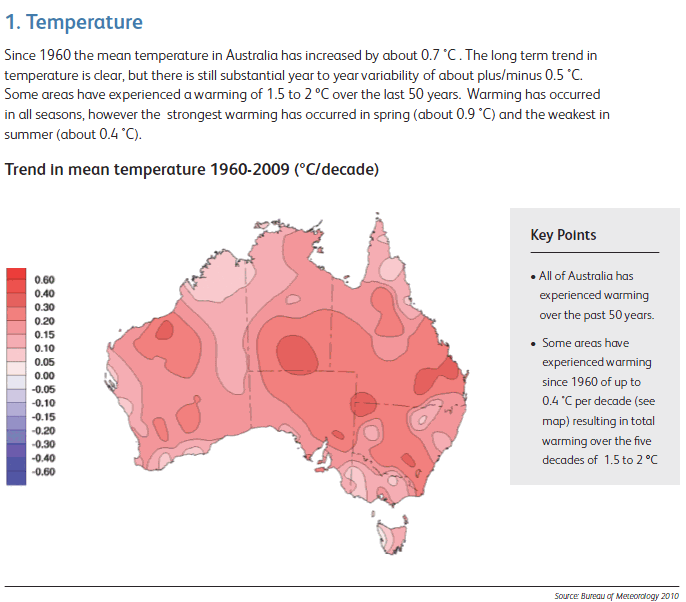
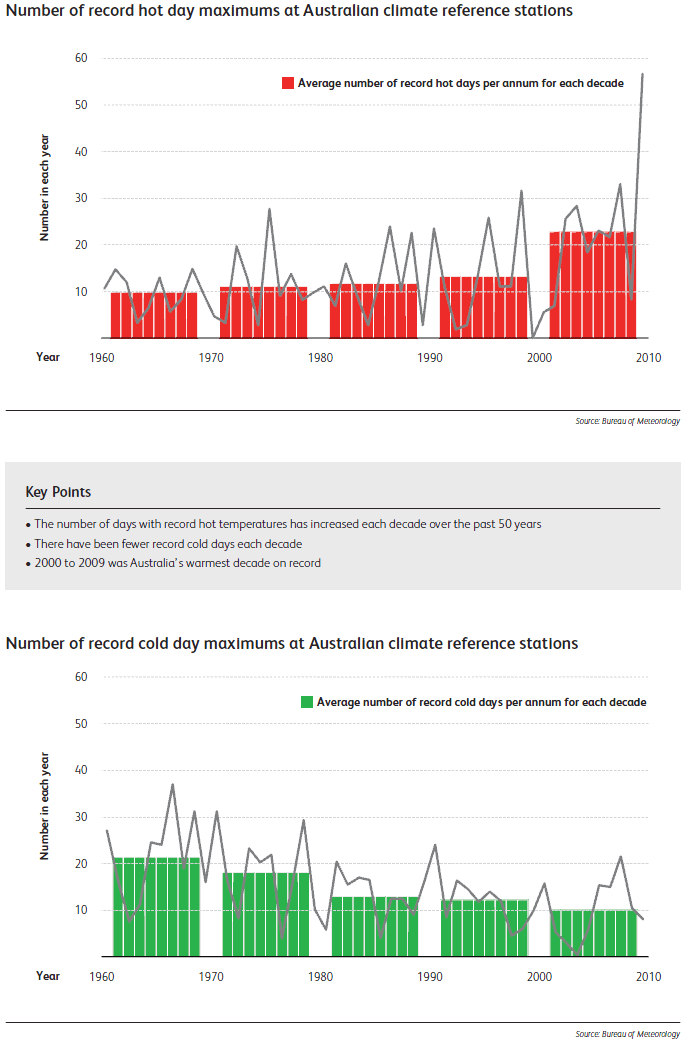
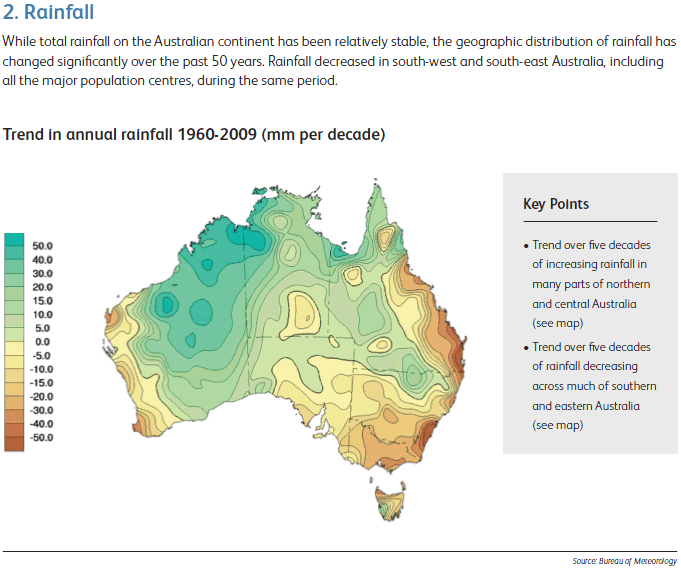
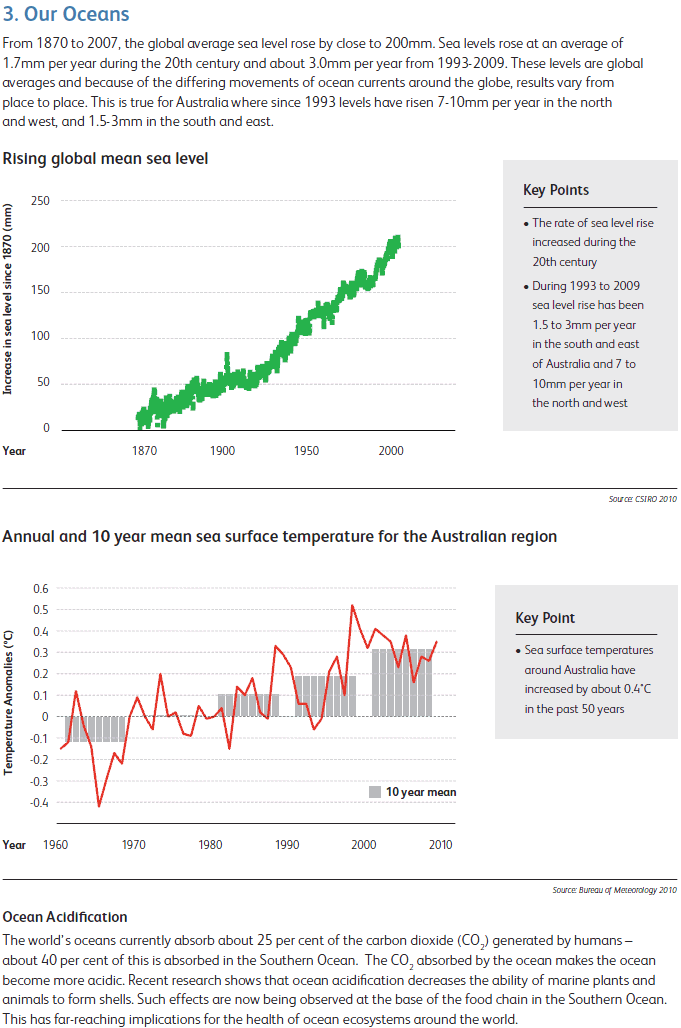
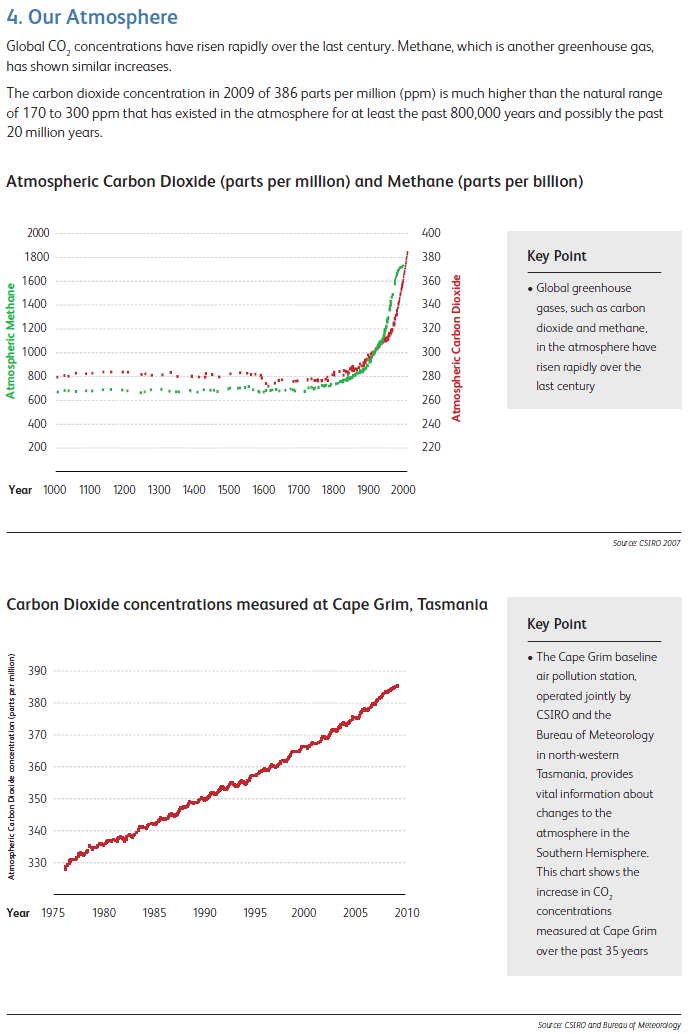
What this means.
Australia will be hotter in coming decades
Australian average temperatures are projected to rise by 0.6 to 1.5 ºC by 2030. If global greenhouse gas emissions continue at current levels, warming is projected to be in the range of 2.2 to 5.0 ºC by 2070. Warming is projected to be lower near the coast and in Tasmania and higher in central and north-western Australia. These changes will be felt through an increase in the number of hot days.
Much of Australia will be drier in coming decades
In Australia compared to the period 1981-2000, decreases in rainfall are likely in the decades to come in southern areas of Australia during winter, in southern and eastern areas during spring, and in south-west Western Australia during autumn. An increase in the number of dry days is expected across the country, but it is likely that there will be an increase in intense rainfall events in many areas.
It is very likely that human activities have caused most of the global warming observed since 1950
There is greater than 90% certainty that increases in greenhouse gas emissions have caused most of the global warming since the mid-20th century. International research shows that it is extremely unlikely that the observed warming could be explained by natural causes alone. Evidence of human influence has been detected in ocean warming, sea-level rise, continental-average temperatures, temperature extremes and wind patterns. CSIRO research has shown that higher greenhouse gas levels are likely to have caused about half of the winter rainfall reduction in south-west Western Australia.
Climate change is real
Our observations clearly demonstrate that climate change is real. CSIRO and the Bureau of Meteorology will continue to provide observations and research so that Australia’s responses are underpinned by science of the highest quality.